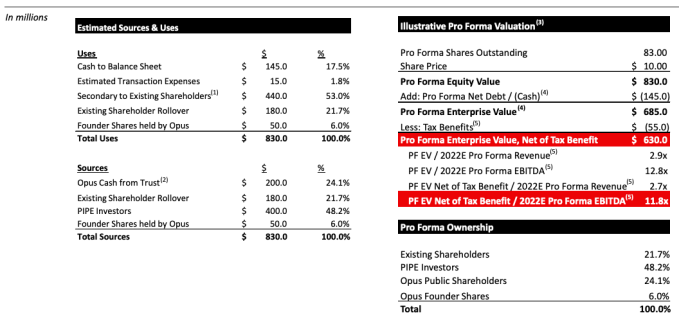Venky Adivi is director of strategic capture and proposal management at
Canonical, publisher of Ubuntu.
In recent years, the private sector has been spurning proprietary software in favor of open source software and development approaches. For good reason: The open source avenue saves money and development time by using freely available components instead of writing new code, enables new applications to be deployed quickly and eliminates vendor lock-in.
The federal government has been slower to embrace open source, however. Efforts to change are complicated by the fact that many agencies employ large legacy IT infrastructure and systems to serve millions of people and are responsible for a plethora of sensitive data. Washington spends tens of billions every year on IT, but with each agency essentially acting as its own enterprise, decision-making is far more decentralized than it would be at, say, a large bank.
While the government has made a number of moves in a more open direction in recent years, the story of open source in federal IT has often seemed more about potential than reality.
But there are several indications that this is changing and that the government is reaching its own open source adoption tipping point. The costs of producing modern applications to serve increasingly digital-savvy citizens keep rising, and agencies are budget constrained to find ways to improve service while saving taxpayer dollars.
Sheer economics dictate an increased role for open source, as do a variety of other benefits. Because its source code is publicly available, open source software encourages continuous review by others outside the initial development team to promote increased software reliability and security, and code can be easily shared for reuse by other agencies.
Here are five signs I see that the U.S. government is increasingly rallying around open source.
More dedicated resources for open source innovation
Two initiatives have gone a long way toward helping agencies advance their open source journeys.
18F, a team within the General Services Administration that acts as consultancy to help other agencies build digital services, is an ardent open source backer. Its work has included developing a new application for accessing Federal Election Commission data, as well as software that has allowed the GSA to improve its contractor hiring process.
18F — short for GSA headquarters’ address of 1800 F St. — reflects the same grassroots ethos that helped spur open source’s emergence and momentum in the private sector. “The code we create belongs to the public as a part of the public domain,” the group says on its website.
Five years ago this August, the Obama administration introduced a new Federal Source Code Policy that called on every agency to adopt an open source approach, create a source code inventory, and publish at least 20% of written code as open source. The administration also launched Code.gov, giving agencies a place to locate open source solutions that other departments are already using.
The results have been mixed, however. Most agencies are now consistent with the federal policy’s goal, though many still have work to do in implementation, according to Code.gov’s tracker. And a report by a Code.gov staffer found that some agencies were embracing open source more than others.
Still, Code.gov says the growth of open source in the federal government has gone farther than initially estimated.
A push from the new administration
The American Rescue Plan, a $1.9 trillion pandemic relief bill that President Biden signed in early March 2021, contained $9 billion for the GSA’s Technology Modernization Fund, which finances new federal technology projects. In January, the White House said upgrading federal IT infrastructure and addressing recent breaches such as the SolarWinds hack was “an urgent national security issue that cannot wait.”
It’s fair to assume open source software will form the foundation of many of these efforts, because White House technology director David Recordon is a long-time open source advocate and once led Facebook’s open source projects.
A changing skills environment
Federal IT employees who spent much of their careers working on legacy systems are starting to retire, and their successors are younger people who came of age in an open source world and are comfortable with it.
About 81% of private sector hiring managers surveyed by the Linux Foundation said hiring open source talent is a priority and that they’re more likely than ever to seek out professionals with certifications. You can be sure the public sector is increasingly mirroring this trend as it recognizes a need for talent to support open source’s growing foothold.
Stronger capabilities from vendors
By partnering with the right commercial open source vendor, agencies can drive down infrastructure costs and more efficiently manage their applications. For example, vendors have made great strides in addressing security requirements laid out by policies such as the Federal Security Security Modernization Act (FISMA), Federal Information Processing Standards (FIPS) and the Federal Risk and Authorization Management Program (FedRamp), making it easy to deal with compliance.
In addition, some vendors offer powerful infrastructure automation tools and generous support packages, so federal agencies don’t have to go it alone as they accelerate their open source strategies. Linux distributions like Ubuntu provide a consistent developer experience from laptop/workstation to the cloud, and at the edge, for public clouds, containers, and physical and virtual infrastructure.
This makes application development a well-supported activity that includes 24/7 phone and web support, which provides access to world-class enterprise support teams through web portals, knowledge bases or via phone.
The pandemic effect
Whether it’s accommodating more employees working from home or meeting higher citizen demand for online services, COVID-19 has forced large swaths of the federal government to up their digital game. Open source allows legacy applications to be moved to the cloud, new applications to be developed more quickly, and IT infrastructures to adapt to rapidly changing demands.
As these signs show, the federal government continues to move rapidly from talk to action in adopting open source.
Who wins? Everyone!





